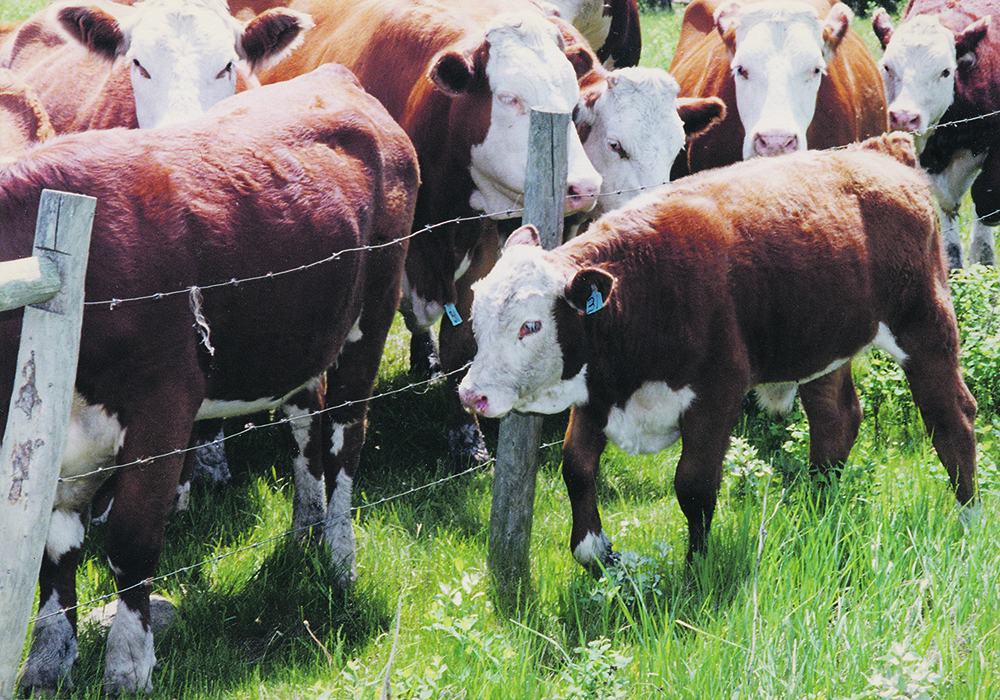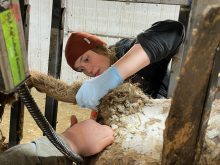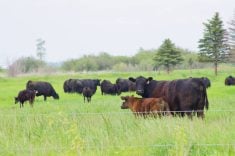Reducing stress on cattle should take pressure off the treatments for respiratory disease.
Less stress results in less shrink, so cattle performance may improve, but it also reduces morbidity and mortality due to disease.
Cattle will do better if we can calm them down at the stressful times of their lives, such as weaning, showing and transportation to feedlots or an auction market.
Read Also

Trump’s tariffs take their toll on U.S. producers
U.S. farmers say Trump’s tariffs have been devastating for growers in that country.
We have eliminated other stressful times, such as dehorning, by increasing the percentage of polled animals and castration by using lidocaine-impregnated bands that remove pain and hence stress.
The old-style tranquilizers are OK in the short term, but they only last a few hours and have slaughter withdrawals of around a week. They must be injected but can also be given intravenously.
These are fine in a pinch and for extreme circumstances, but they are frowned upon in the show ring and for good reason.
Slaughter withdrawal is seven days for acepromazine, but at least it is approved in cattle. Other promazines are not approved for cattle so should be avoided at all costs.
There are side effects, such as droopiness and prolapse of the penis.
They do have their place, such as calming fractious cattle, used as a pre-medication for surgery or to calm sale bulls for clipping, torching or freeze branding.
They can be worth it if they make life easier for producers and animals.
Destress is a heavily researched product proven to work in many species. It is made up of natural products, so no withdrawal is necessary, and can be fed or put though the water, so no handling is necessary.
The product was developed to reduce shrink during transportation to the packing plant and definitely has big payback when given to animals transported more than four hours.
It needs to be fed within 24 hours of transportation.
I have also seen it used for weaning, show animals and purebred sales.
Testimonials have been good. For example, there are reports of shrink reduced by five percent or more in slaughter cows.
The only downfall is scheduling. A load of cattle going to market is often sorted out of a pen just before leaving, so it’s not economical to feed it to the entire pen.
Ferappease is the newest product I have seen. It was developed in the United States and has been available in that country.
It comes in a bottle and is applied based on a body weight range.
It is administered to two points: one just above the muzzle and the other in the nuchal skin, which is the area just behind the poll.
It may be useful when working animals before the stress of weaning.
One treatment is supposed to last up to 14 days so could be worked in when cattle are being processed, such as vaccinating before or at weaning.
Cattle are quickly and visibly calmer.
After discussing it with a veterinarian, run your own in-house trial in which one pen is given the product and another is not to see if there is a visible difference.
A lot of development research has been done on this product.
It is classified as a nutraceutical, so no withdrawal times, which makes it a little easier to use than other biologicals or antimicrobials. For this reason, it will be available at veterinary clinics, farm supply stores and feed mills. I have already seen it in some of these locations.
The jury is out on these types of products, but they definitely tick a few boxes as far as improving animal welfare. After all, calm cattle are happier cattle.
Time will tell if these products have started a trend and reduce antimicrobial use and resistance concerns.
It may be worth revisiting this topic at a future date to assess their true long-term benefits to the cattle industry.
Roy Lewis works as a veterinarian in Alberta.















